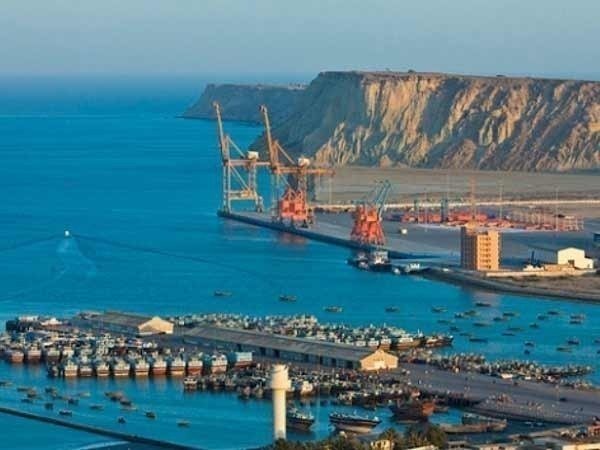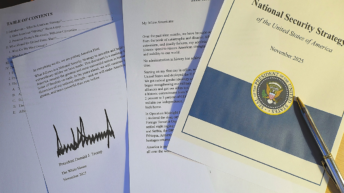
In the first week of November, a two-day conference was organized in Washington by the Center for Security, Strategy and Policy Research (CSSPR), University of Lahore, the School of Advanced International Studies, Johns Hopkins University, and Engro Corporation. The subject for discussion was Pakistan-US Relations. The Pakistani Ambassador in Washington delivered the keynote address.
Pakistan’s relations with the US had seen a sharp downslide during the last phase of the government of Imran Khan in Islamabad. As opposition to Imran Khan mounted in and outside Pakistan’s law-making bodies, he shifted his allegiance to the Pakistan Army and set up a relationship with it.
Imran Khan made open accusations that the US was interfering in the internal affairs of Pakistan and the Pak army facilitated this interference. He went to the length of saying that Washington wanted to remove him from power because the Americans were unhappy about his visit to Moscow at a time when Putin had ordered military action against Ukraine. Imran Khan had been brandishing a letter which he alleged the American foreign office had written to call for his removal as the Prime Minister of Pakistan.
Whether the US is or is not interfering in the internal affairs of Pakistan is not a subject we are interested in. It is so because we are aware of how the hegemony of the superpowers functions when dealing with the developing world.
The US and its allies in the Western world have always considered Pakistan as a very important country for their strategic interests in the Asian Continent. To be precise, their main objective has been to create a bulwark of anti-Russian (earlier anti-Soviet) forces in the Asian Continent that blocks Russia’s advance southward in the Indian Ocean Region.
It was in their interest that the Islamic religious sensitivity be sharpened among the people in the areas that lay in the underbelly of the Russian State. First, they made an experiment through the Basmachis (terrorist groups in Turkestan) in the second and third decade of the 20th century but they met with reversals. The Soviets tightened their grip on the Muslim States of Central Asia so much that even after the implosion of the Soviet Union in 1991, the five Central Asian and two Trans-Caspian States have not been able or willing to wriggle out of the enduring Marxist legacy.
The failure of the Basmachi movement in Central Asia made the British imperialists think seriously of another regional political entity that could serve their purpose of containment of Russia. Their think tanks connected this goal to the partition of India, a proposal initiated and subtly pursued by London. Thus the creation of a new state named Pakistan in the most geopolitically sensitive part of British India became a reality in 1947.
After Pakistan came into being as a new entity on the map of the sub-continent, the colonial forces looked for further strengthening of their anti-Russian front in South Asia. The revival of Pan-Islamism had to be generated and supported as the new political weapon against other imperialist intrusions. Therefore, we have the Central Asian Basmachis in a new avatar like the LeT, JeM, Lashkar e Jhangvi, Hizbul Mujahideen, or the current Ansar Ghazvat ul Hind, and dozens of new versions of sub-continental terrorist support.
Most of these organisations are based in Pakistan and the Pakistani army with its close connections with the Pentagon is the main supporter of these outfits. Therefore the US has to provide arms and funds to the Pakistan Army to maintain its stranglehold over that state, keep the armed forces in power and protect them from domestic accountability.
The bilateral conference in a way was a damage-controlling exercise in which Pakistan tried to wash off the irritants that were not real or substantive, and restore normal relations with the US. We think that since both sides wanted to normalize bilateral relations, they have succeeded to a large extent in that objective. The dark clouds that loomed over the entire spectrum of US-Pak relations have dispersed. The US relented and the AFTF pulled Pakistan out of its gray list.
Speaking about the two-day seminar, Chinese foreign policy expert Yun Sun said Pakistan’s relationship with the US was a factor in China’s overall strategy for South Asia, but “China has plenty of confidence that its relationship with Pakistan is going to continue regardless of the modality of US-Pakistan relations.” She made a very interesting point by saying that China was also adjusting or recalibrating its policy and expectations towards Pakistan, especially in terms of the CPEC.
“And from that recalibration, there’s almost a welcoming attitude in China that Pakistan should re-balance its external strategy. And there’s a welcoming attitude that Pakistan is reaching out to the United States again,” Ms. Yun said.
It is pertinent to recollect that Pakistan was instrumental in the creation of the Sino-US interface in 1970. National Security Archives Book 66 says, “ Mao Zedong’s and Zhou’s interest in receiving a visit from Nixon laid the way for Kissinger’s secret trip in July 1971 and the beginning of the U.S.- China effort to discuss the issues that had divided them over the years.”
Intervening in the discussions, the Director of the China Programme said that China feels the United States should not urge China and Pakistan to renegotiate Beijing’s debt and should not ‘badmouth’ the Pakistan-China relationship”. She went on to say that she did not believe that the recalibration of US-Pakistan relations would come at the expense of China’s interests in the region “because India is still there and because CPEC will remain one of the most significant campaigns regardless of how people feel about it. This readjustment of Pakistan’s expectations and external alignment strategy has much approval in China.”
These observations by an important source such as the Stimson Centre on China Studies reveal that two important aspects of China’s policy for the South Asian region. “India is there” is number one and the CPEC is number two. Both of these objectives have international implications. ‘India is there’ means that democracy and freedom as a political arrangement are a threat to the military-run state of Pakistan and to the totalitarian regime in Beijing.
As far as the CPEC is concerned, it has graduated to the Belt and Road Initiative of China or is an adjunct of that super project. That is how China imagines she can wield unprecedented influence in the European region as well. Therefore, China’s twin ambitions extend to the entire democratic world. In simpler language, ‘liberal’ dispensations will have to understand the Chinese game plan and consider how this challenge can be met jointly. It is easy to indulge in the wishful thinking that it is the headache of India alone and a battle she must fight by herself. Democracies have to understand whose battle it is at the end of the day.






Add comment